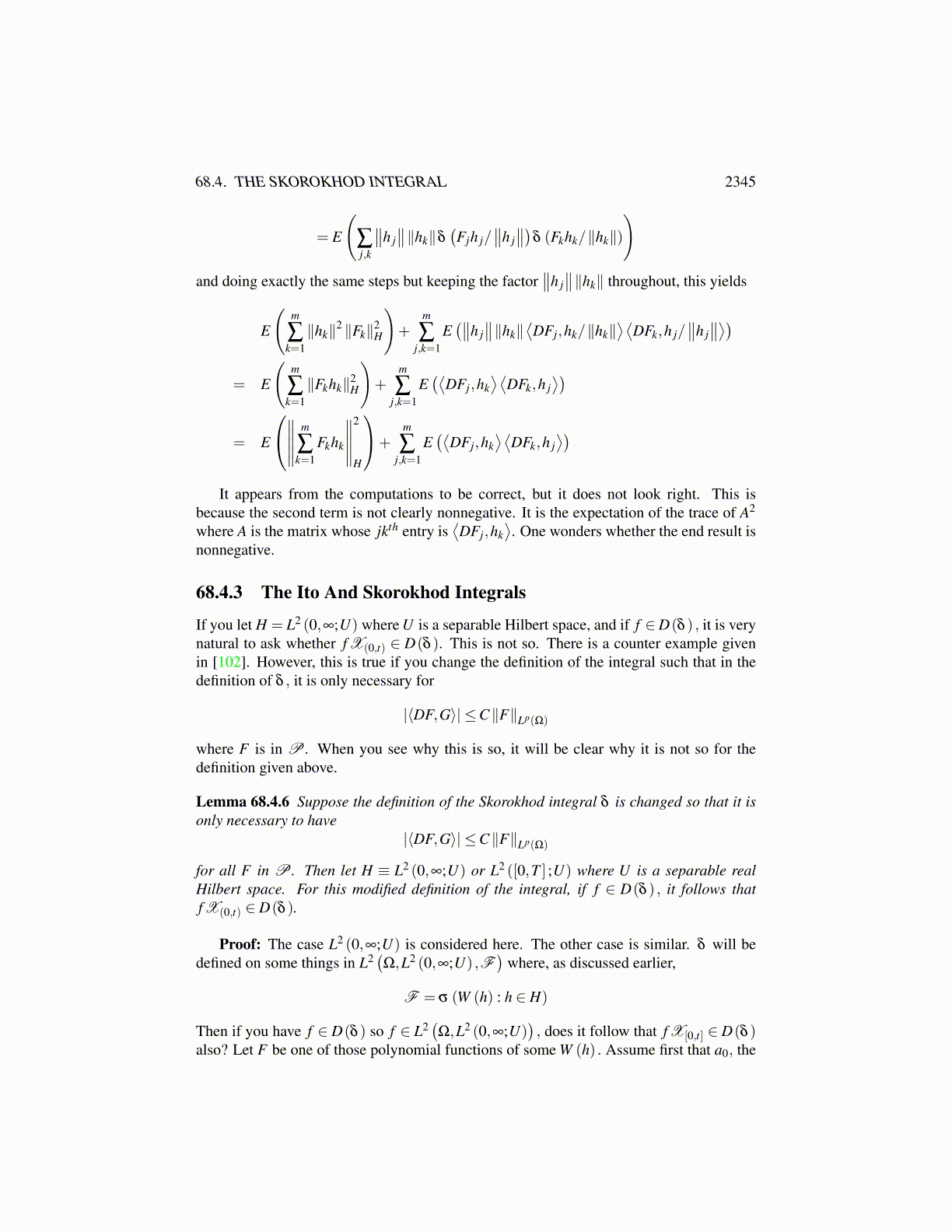
68.4. THE SKOROKHOD INTEGRAL 2345
Consider the terms involved. The first term is just E(∥∥F̂h
∥∥2H
)= E
(∥Fh∥2
H
). Now con-
sider the third term. It equals
−E(D(Dp+1
(F̂))
, F̂h)=−E
(D2
p+1(F̂)
F̂)
=−1(√2π)p+1
∫Rp
∫R
D2p+1(F̂ (x)
)F̂ (x)e−
12 |x|
2dxp+1dx̂p+1
=1(√
2π)p+1
∫Rp
∫R
Dp+1(F̂ (x)
)Dp+1
(F̂ (x)
)e−
12 |x|
2dxp+1dx̂p+1
− 1(√2π)p+1
∫Rp
∫R
Dp+1(F̂ (x)
)(xp+1F̂ (x)
)e−
12 |x|
2dxp+1dx̂p+1
= E((
Dp+1F̂)2)−E
(W (h)Dp+1
(F̂)
F̂)
= E((
Dp+1F̂)2)−E
(W (h)D
(F̂), F̂h
)Hence 68.4.23 reduces to
E(∥∥F̂h
∥∥2)+E
((Dp+1F̂
)2)
= E(∥∥F̂h
∥∥2)+E
(⟨D(F̂),h⟩2)
= E(∥Fh∥2
)+E
(⟨D(F) ,h⟩2
)This assumed that ∥h∥= 1. For arbitrary nonzero h,
E(
δ (Fh)2)
= ∥h∥2 E
(δ
(F
h∥h∥
)2)
= ∥h∥2
(E
(∥∥∥∥Fh∥h∥
∥∥∥∥2)+E
(⟨D(F) ,
h∥h∥
⟩2))
= E(∥Fh∥2
)+E
(⟨D(F) ,h⟩2
)Next consider a generalization, u = ∑
mj=1 Fjh j where the
{h j}
is an orthonormal set ofvectors. Say Fj = Fj
(W (k1) , · · · ,W
(kn j
)). Let
{h1, · · · ,hm,e1, · · · ,ep
}= {gi}m+p
i=1 be anorthonormal basis for the span of all the h j and ki. Thus gi = hi for i≤ m. Then let
Fj(W (k1) , · · · ,W
(kn j
))= F̂j (W (h1) , · · · ,W (hm) ,W (e1) , · · · ,W (ep))
The computations will be done with respect to this orthonormal set because it will be sim-pler. Also, the above argument using the density function for the normal distribution willbe used without explicitly repeating it.
It is desired to consider E(
δ (u)2)
. Recall that
D(δ (Fh)) = Fh+W (h)D(F)−D⟨DF,h⟩ .